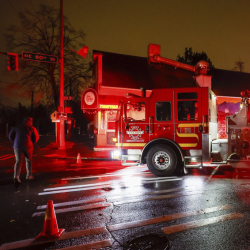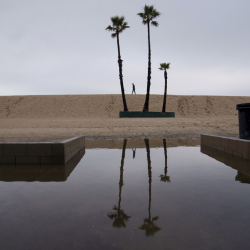 In the months after the 9/11 terror attacks in 2001, FBI agents conducted surveillance of U.S.-born cleric Anwar al-Awlaki and uncovered detailed information about his alleged use of prostitutes, according to newly released FBI documents.
In the months after the 9/11 terror attacks in 2001, FBI agents conducted surveillance of U.S.-born cleric Anwar al-Awlaki and uncovered detailed information about his alleged use of prostitutes, according to newly released FBI documents.
The information is contained in documents obtained through a Freedom of Information Act lawsuit filed by Judicial Watch, a conservative legal group.
Al-Awlaki lived in a Washington suburb at the time of the terror attacks and for several months afterward. The FBI documents say he visited prostitutes at least seven times and paid up to $400 for sex. The documents show the cleric paid a total of $2,320 for the visits and always paid in cash.
Al-Awlaki's use of prostitutes has been reported previously, but the FBI documents show that agents interviewed the escorts, obtained detailed information about the encounters, and the FBI even reviewed the possible legal charges that might be brought against him.
One prostitute said al-Awlaki visited her on February 4, 2002, and she first peered out at him through a peephole in the hotel room door. When interviewed by the FBI a day later, she said she thought al-Awlaki "looked like Osama bin Laden."
The documents obtained by Judicial Watch also include some handwritten surveillance reports by FBI agents. The papers show nothing incriminating and merely recount his visits to stores, to his mosque and other locations.
Al-Awlaki was killed in Yemen by a U.S. missile strike in September 2011. By that time, U.S. officials said, he had become a key member of the terror group al Qaeda in the Arabian Peninsula and was involved in two failed terror plots against the United States. One was the 2009 scheme to explode a bomb hidden in an operative's underwear on a U.S.-bound airliner and the other was a 2010 plot involving bombs hidden in printers on cargo planes.
There have been questions for years about when al-Awlaki became radicalized. One largely redacted document from February 4, 2002, contained abbreviated language indicating that al-Awlaki was a member of a terrorist organization and should be approached with caution. The rest of the document's message was not provided, but that item and other documents make it clear he was under investigation. Judicial Watch noted that al-Awlaki spoke at a Pentagon luncheon the next day.
The 9/11 Commission report said al-Awlaki had contact with two of the hijackers -- Nawaf Alhamzi and Khalid al-Midhar -- the year before the attacks when he served as an imam at a San Diego mosque. He also may have had contact with one of those men and a third hijacker, Hani Hanjour, when he served at a mosque in Falls Church, Virginia, in 2001.
A December 2006 FBI memo that was part of the FOIA release said the cleric was interviewed in September 2001 after the terror attacks and recognized a picture of one of the hijackers. But the memo said al-Awlaki was never thoroughly questioned about his relationship with any of the hijackers, and "their exact relationship remains unclear."
The FBI did not respond to inquiries about the documents.
Portland and Seattle
Free Subscription to Breaking News
Free Subscription to Breaking News





















































































































































































































































































































































